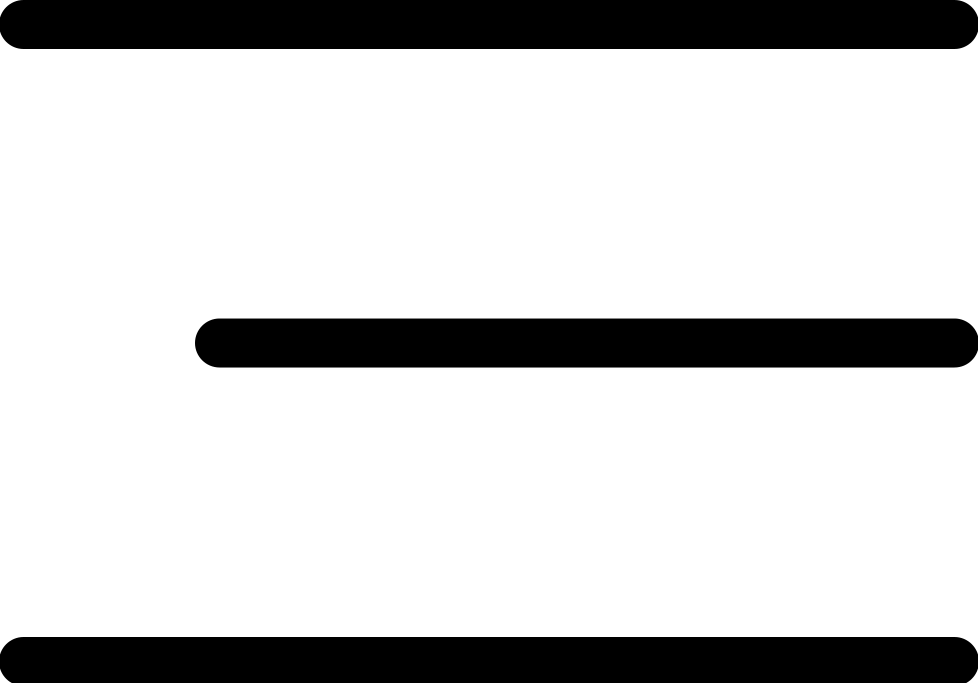This magnificent 51-hour course will help you have a kick start in power electronics including rectifiers, AC choppers, DC choppers, and inverters. In addition to the basics of electrical protection, we will also cover topics such as overcurrent protection, differential protection, distance protection, circuit breakers, and fuses.
Throughout the Power Electronics course, you will learn:
- The applications of power electronics and the definition of a power electronic circuit.
- Different types of switches such as diodes, thyristors, GTO, BJT, IGBT, Mosfet, etc.
- The different AC/DC converters (rectifiers) such as half-wave and full-wave rectifier single-phase circuits in uncontrolled, half, and fully controlled bridges. In addition to the different three-phase rectifier circuits.
- AC chopper circuits or AC/AC converters in the case of R load, L load, RL parallel, RL series load, and capacitive loads. In addition to the integral cycle control of an AC chopper.
- DC choppers or DC/DC converters such as the step-down DC chopper with R and R-L-E load, and the step-up DC chopper with R, RL, and RE loads. Moreover, we will also learn about the buck, boost, and buck-boost regulator circuits.
- Inverter or DC/AC converters including single-phase half-bridge R-load, single-phase half-bridge RL-load, single-phase bridge inverter R-load, single-phase bridge inverter RL-load, and the three-phase inverters. Furthermore, we will also look at the single, multiple, and sinusoidal pulse width modulation.
You will learn simulation using the MATLAB Simulink program:
- Single-phase half-wave controlled and bridge-controlled rectifiers.
- Single-phase AC chopper with R and RL load
- DC-DC converters such as buck, boost, and buck-boost regulators.
- Single-phase half-bridge, bridge inverters, and three-phase inverters.
Throughout the Electrical Protection course, you will learn:
- The different components of the electrical protection system
- Zones of protection
- The trip circuit of the electrical system
- The primary and backup protection
- The fault clearing time
You will also learn about the different types of relays, including:
- Directional power relays
- Overcurrent relays
- Distance relays
- Plain impedance relays
- Directional impedance relays
- Modified impedance-type distance relays
- Reactance-type distance relays
- Mho or admittance distance relays
Additionally, you will gain an understanding of:
- The principle of operation and selection of low-voltage circuit breakers
- The principle of operation of earth leakage circuit breaker or residual current CB
- The selection of medium voltage circuit breakers
- The types of low voltage and high voltage fuses
LogixPro Course
This course is designed to teach you the basics of PLC programming through fun and interactive simulations. With LogixPro, you can simulate various procedures such as moving belts, garage openings and closings, and mixing liquids in a tank.
By taking this course, you will learn ladder programming and PLC with an easy and interactive simulation method.
Bonus Gift:
You will also get the slides for the Power Electronics and Electrical Protection Course Bundle for those who are interested in them or having them as a revision for themselves
- More than 250 Pages of Rectifiers and Basics of Power Electronics Slides
- 45 Pages of AC Choppers Slides
- 78 Pages of DC Choppers Slides
- 90 Pages of Inverters Slides
- 153 Pages of Electrical Protection Slides
If you've been looking for a ONE COURSE BUNDLE with in-depth insight into Power Electronics, Electrical Protection, ETAP, and PLC basics, this is the one for you.
- Anyone who is interested in understanding power electronics.
- Anyone who wants to know about different converters and how rectifiers work
- Beginner course for electrical engineering students and for those who want to gain knowledge about AC Choppers
- Electrical engineers and electrical power engineering students who want to learn about DC choppers
- Electrical engineers or electrical power engineers who want to learn more about inverters in power electronics.
- Anyone who wants to learn about electrical protection
- Anyone who wants to learn about LogixPro simulator that helps in learning about PLC
- Very detailed and interesting course ~ Gordon M
- Amazing, the principles of operation are well explained ~ Ifidon A
- Very lucid and to the point subject disseration. Thank you. Helped me from Mechanical Engg background to understand and converse on Power Electronic topics ~ Chinmoy
- Such a great course. It helped me to revise a lot of electronic circuits fundamentals ~ Saad A
- Good learning experience with detailed equations, recommend this course for anyone who's want to be a professional in this area ~ Volker K
- Good course, I learned all basics and principles of power electronics with simulations ~ Sivasubramanian
- Very interesting and a lot of information. I would really recommend this course to anyone ~ Lonwabo G
- Very detailed good material from the basics to advanced topics. Recommended ~ Balint G
- i enjoyed learning with the instructor. The content is excellent and delivery is great. You can be a veteran from scratch from this course ~ Nancy P
- I am loving the course. Big questions are being resolved in these years of study in electronics ~ Alvaro Francisco G
- Understand definition of power electronics
- Realize different applications of power electronics
- Know different types of converters
- Know different categories of power electronic devices
- Understand different losses associated with power electronics
- Difference between ideal and practical switch
- Understand different factors when selecting the power electronic device
- Understand how diode works
- Understand the diode V-I Characteristics
- Learn about different types of diodes
- Learn how a thyristor works
- Understand thyristor V-I characteristics
- Understand different operating states of thyristor
- Know the latching and holding current of thyristor
- Understand different types of thyristor
- Learn how fully controlled switch works
- Understand different types of fully controlled switches
- Understand why GTO is the king of power electronics
- Understand how rectifier works
- Learn Different Types of Rectifiers for Single Phase
- Learn about Half Wave Rectifier R load for both controlled and uncontrolled
- Learn about Half Wave Rectifier R-L load for both controlled and uncontrolled
- Learn about Half Wave Rectifier R-L load for both controlled and uncontrolled with Free wheeling Diode
- Understand the Usage of Freewheeling Diode
- Understand the Principle of Firing angle
- Understand the Biphase Rectifier
- Understand the fully , half controlled and uncontrolled Bridge Rectifier
- Understand the Performance Parameters for Rectifier Circuit
- Learn about the Power Factor
- Learn about the Firing Circuit UJT
- Understand the Protection of Power Electronic devices Against Over-current,Over-Voltage and Transient state.
- Understand the Series and Parallel Diodes
- Learn the Isolation of Firing Circuit using Pulse Transformer
- Learn the Isolation of Firing Circuit using OptoCoupler
- Understand the definition of AC chopper
- Analyze the AC chopper R load circuit
- Learn the AC chopper L load circuit
- Analyze the AC chopper R-L series load circuit
- Understand the AC chopper R-L parallel load circuit
- Analyze the AC chopper Capacitive load circuit
- Understand the integral cycle control
- Learn how to use AC chopper in transformer tap changing
- Learn the applications and disadvantages of AC choppers
- Analyze the AC chopper loaded by AC Motor
- Definition of DC choppers
- Applications of DC choppers
- Understand step down DC chopper with R-load.
- Generation of duty cycle
- Step down DC chopper with R-L-E load
- Step up DC chopper R or R-L load
- Step up DC chopper with RE load
- Buck regulator
- Boost regulator
- Buck-boost regulator
- Definition of inverter
- Importance and applications of inverters
- Analysis of single phase half bridge R-load
- Analysis of single phase half bridge RL-load.
- Performance parameters of an inverter
- Analysis of single phase bridge R-load
- Analysis of single phase bridge RL-load.
- Understand the three phase inverters and obtaining the line voltages and phase voltages.
- Single pulse width modulation
- Multiple pulse width modulation
- Industrial inverters
- Sinusoidal pulse width modulation
- simulation using MATLAB of single-phase half wave controlled rectifier
- simulation using MATLAB of single-phase bridge controlled rectifier
- simulation using MATLAB of single-phase AC chopper with R and RL load
- simulation using MATLAB of DC-DC converter as a buck regulator
- simulation using MATLAB of boost regulator
- simulation using MATLAB of buck-boost regulator
- simulation using MATLAB of single-phase half-bridge inverter
- simulation using MATLAB of single-phase bridge inverter
- simulation using MATLAB of three Phase Inverter
- Overview on the PLC hardware configuration
- Overview on types of inputs and outputs in PLC
- Advantages of using PLC over classic control
- Overview on different PLC programming languages
- Discuss the important symbols in PLC
- Definition of PLC scan cycle
- Usage of markers in PLC
- Understand types of timers and counters in PLC and how to use them
- Do tasks in batch simulator
- Do tasks in silo simulator
- Do tasks in door simulator
- Do tasks in I/O simulator
- Different components of the electrical protection system
- Zones of protection of electrical systems
- Trip circuit of electrical system
- Primary and backup protection
- Characteristics of measuring the relay performance
- Fault clearing time and time lag in electrical protection
- Different types of relays
- Directional power relay and its applications
- Definition of overcurrent protection
- Settings and applications of overcurrent protection
- Distance protection in electrical systems
- Construction and operation of a distance relay
- Plain impedance relay
- Operating characteristics and R-X diagram of an impedance relay
- Stepped distance protection
- Transmission line protection and directional impedance relay
- Modified impedance-type distance relay
- Reactance-type distance relay
- Mho or admittance distance relay
- Principle of operation and selection of low voltage circuit breakers
- Principle of operation of earth leakage circuit breaker or residual current CB
- Selection of medium voltage circuit breakers
- Types of low voltage and high voltage fuses
- Types of differential protection
- Current balance differential protection
- Voltage balanced differential protection
- Percentage differential current relay
- Basics of electric circuits
- Passion to learn!






 Full lifetime access
Full lifetime access  Access on laptop,
tablet and mobile devices
Access on laptop,
tablet and mobile devices  Certificate of
completion
Certificate of
completion 











